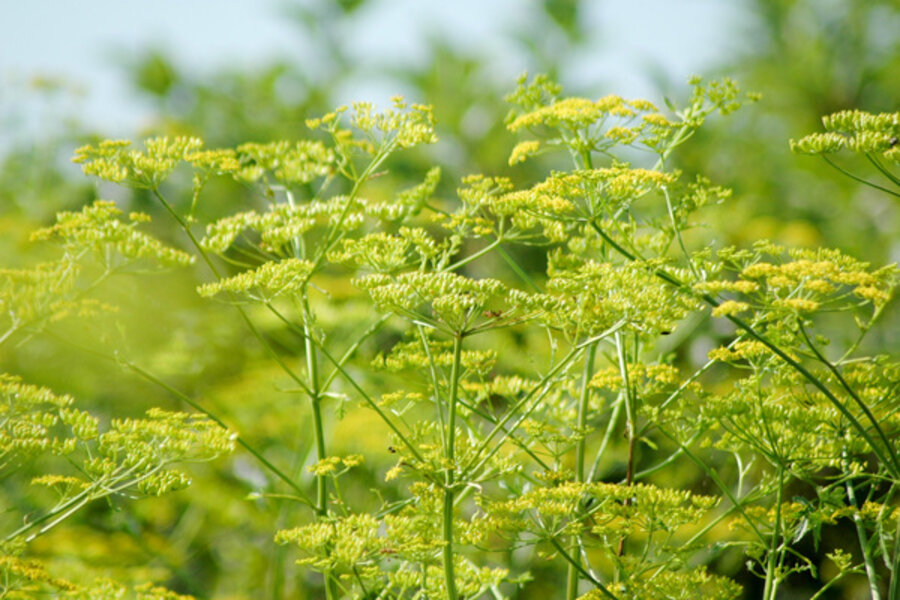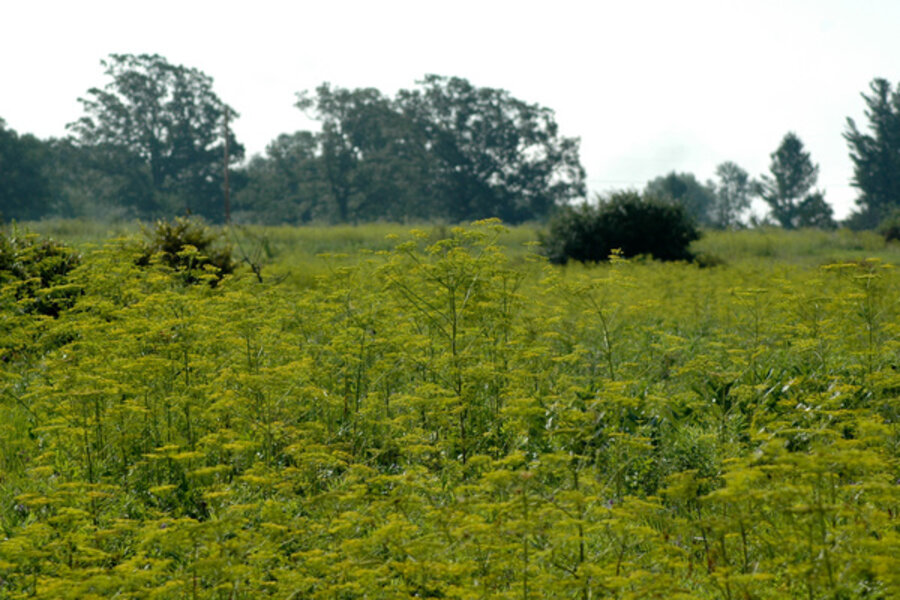Wild parsnips: One of the most tenacious invasive plants
Loading...
Wild parsnip is a floral Dorian Gray, an invasive, venomous plant that masquerades as a good-looking flowering plant of American roadsides and fields.
It’s not the only botanical wolf in sheep’s clothing — purple loosestrife comes immediately to mind — but it may be the nastiest.
A widespread nuisance
Introduced as a root crop by European settlers in the 17th century, it jumped the fences of colonial gardens and now grows nearly everywhere. Only Florida, Georgia, Alabama, Mississippi, and Hawaii are free of Pastinaca sativa, according to the U.S. Department of Agriculture National Resources Conservation Service.
That census dates to 2007, so it may be in all 50 states by now.
The belligerent ability of wild parsnip to spread and push out native plants is one reason that it's so nasty. The other is that the plant’s leaves, stems, and flowers contain chemicals called furocoumarins that, in the presence of sunlight, cause blistering.
Plants 'burn' the skin
Technically it’s known as phytophotodermatitis. In everyday language, it’s a painful burn with sores and skin discoloration that may last a year or longer.
Wild parsnip plants, which have long, thick taproots, are monocarpic perennials, which means that they behave somewhat like a biennial. They produce a low rosette of leaves for at least the first year; then, when conditions are just right, they produce a flowering plant, set seeds, and die.
Like Queen Ann’s lace and other cousins in the carrot family, their flat, umbrellalike flower clusters are held on a single, stiff stalk than can grow four feet and taller.
Methods for control
Like many exotic plants, wild parsnip is aggressive once begins to spread, nearly impossible to stop. Parts of my Vermont acreage already are covered, far too many plants to try to remove by hand or by spot spraying with Roundup or an organic herbicide.
I’d rather not resort to chemicals, so next spring I’ll be in our field with a brush cutter, wearing long sleeves and long pants, mowing and remowing so that plants don’t have a chance to flower and set seeds.
I’ll need to return the next spring and summer, and the next, and the next. I suspect it’s a losing battle, but one I want to wage.
-----
Karan Davis Cutler blogs regularly at Diggin’ It. To read more, click here. She's a former magazine editor and newspaper columnist and the author of scores of garden articles and more than a dozen books, including “Burpee - The Complete Flower Gardener” and “Herb Gardening for Dummies.” Karan now struggles to garden in the unyieldingly dense clay of Addison County, Vt., on the shore of Lake Champlain, where she is working on a book about gardening to attract birds and other wildlife.






